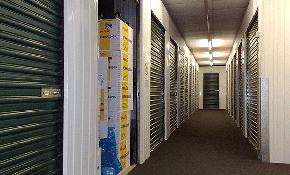SAN DIEGO-Look for more open-air centers and higher-density developments in the future, but don’t think you’re inventing anything new, panelists at the ICSC Fall Conference and Trade Exposition here observed Monday. To those who say that open-air centers are a new idea in retailing, the panelists said, “Remember the downtowns of yesteryear?”
The panel was billed as “Retail Real Estate 2010″ and promised to provide a look at what the retail world will look like in five years, but the panelists didn’t necessarily gaze into crystal balls and issue forecasts. Rather, they examined the forces shaping decisions by owners and tenants of retail real estate and explained why several generations of shopping mall development have given way to a more diverse array of types of retail projects.
Panel moderator David Contis, COO of the Santa Monica-based Macerich Co., defined the four major forces shaping the industry today as the convergence and combination of different formats, the intensification of uses, the consolidation of retailers and retail real estate owners, and the decisions that both owners and tenants must make about “what to do and how to do it” when choosing formats.
“We are not inventing anything new” with open-air and life-style centers, observed CEO Yaromir Steiner of Steiner + Associates in Columbus, OH. Steiner said that what’s happening in downtowns throughout America today is an effort to restore the types of retail districts that flourished before “a lack of urban planning” and other factors caused downtowns to fade or die. Other panelists agreed, saying that what’s considered open air today is the same type of mix of uses that prevailed in downtowns up to the 1950s and 1960s before the country turned to enclosed malls.
Steiner said one of the main forces driving the open-air movement is “the re-introduction of leisure time uses” like restaurants and entertainment into shopping districts. Generally speaking, shoppers don’t go to enclosed malls for leisure time activities, they go to open-air venues, he said.
But the enclosed mall is anything but dead, as pointed out by John Schroder, COO of Westfield’s Los Angeles-based US operations, who told of a company research project that surveyed about 2,000 of its customers near its enclosed Topanga Mall. When asked if they would prefer to see the mall’s expansion as an indoor or an outdoor project, those surveyed overwhelmingly preferred an indoor expansion, citing the heat of the San Fernando Valley as their reason for wanting to stay inside.
The conclusion is not that indoor is good and outdoor is bad or vice versa, Schroder said. It’s just that developers and shopping center owners need to give shoppers the type of venue that makes the most sense for that specific site. Schroder also cited changes in the site selection policies of retailers like Target and Wal-Mart, both of which are trying to enter urban markets. “Retailers like Target and Wal-Mart have realized that they’ve got to have some flexibility if they want to be in urban areas,” Schroder said. As a result, he said, Target is now willing to build multilevel stores, like the two-level store under way at Westfield’s Topanga property.
Among the other reasons that different formats are now being combined in the same centers and shopping districts, according to the panelists, are the consolidations in the department store industry and the willingness of department stores to coexist peacefully in shopping centers with formats–like Target–that they would have spurned in the past. Department stores have long held power over the tenant mix through the approval rights in their leases, but consolidation has weakened their power and the department stores themselves have become more accepting of the other formats, the panelists agreed. Yet another reason for the mixing of formats and types of retailers is that “Somebody woke up one day and realized that there are customers who shop at Target and also shop at Nordstrom,” commented Brad Geier, general partner with M&H Realty Partners in San Diego. Donald Wright, an SVP at the Pleasanton, CA-based Safeway supermarket chain, said that the grocery store industry is also realizing that it needs to be flexible and not always insist on a ground-level-only store with surface parking in a neighborhood shopping center. Sometimes the only venue available for a grocery store to reach its customers might be an urban location with parking below and residential units above, he pointed out.
It was a combination of flexibility in its approach and the necessity of finding venues outside of malls that caused the Kohl’s department store chain to develop the types of locations it has chosen, according to Patrick Peery, a principal at Pryanston Realty Partners in Whitefish Bay, WI. Peery said that in his experience with Kohl’s, the company in its early days had to find locations outside of malls because the malls “didn’t want us.”
Schroder argued that it wasn’t malls that didn’t want the likes of Kohl’s; it was the department stores that controlled who could or couldn’t be a tenant. But now, Schroder said, “Department stores that in the past considered certain formats to be beneath them have changed their point of view.”





 Copyright © 2024 ALM Global, LLC. All Rights Reserved.
Copyright © 2024 ALM Global, LLC. All Rights Reserved.











